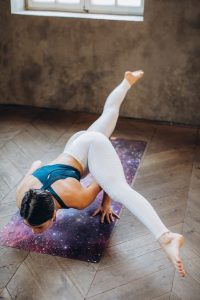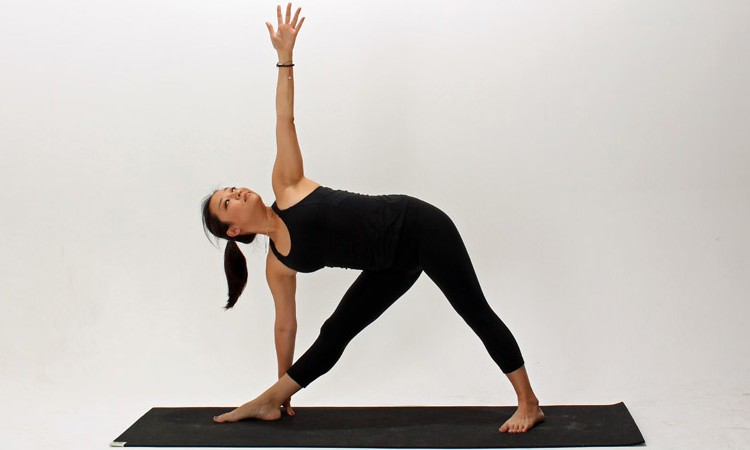7 Asanas to Soothe and Correct Knock Knees
Embarking on a journey towards holistic well-being involves nurturing every aspect of our bodies, and the health of our knees is no exception. For individuals dealing with knock knees, the ancient practice of yoga serves as a transformative tool to provide comfort and correction. In this exploration, we will delve into the realm of Knee Comfort Yoga, uncovering seven purposeful asanas designed to soothe and correct knock knees. From gentle stretches to empowering poses, these exercises contribute to enhancing knee health and alignment, fostering a holistic approach to total body wellness.
1. Tadasana (Mountain Pose): Establishing a Strong Foundation
Begin your Knee Comfort Yoga journey with Tadasana, also known as Mountain Pose. This foundational pose establishes a strong connection with the ground, promoting alignment from the feet up. For individuals with knock knees, Tadasana is particularly beneficial as it encourages grounding through the feet and engages the thighs, setting the stage for correction and fostering a sense of stability.
Stand with your feet together, grounding evenly through both feet. Engage your thighs, lift your chest, and roll your shoulders back. Allow your arms to hang by your sides with your palms facing forward. Keep your gaze straight ahead and breathe deeply. Hold the pose for 30 seconds to a minute, gradually increasing the duration with practice.

2. Virabhadrasana II (Warrior II): Dynamic Strength and Alignment
Warrior II, or Virabhadrasana II, is a dynamic pose that engages the legs, promoting both strength and flexibility. This pose encourages external rotation in the front leg, contributing to the correction of knock knees. Engaging the thighs and grounding through the feet, Warrior II not only tones the muscles but also instills a sense of confidence and focus.
Start in Tadasana, then step your feet wide apart. Turn your right foot out and bend your right knee, aligning it over your ankle. Extend your arms parallel to the floor, reaching through your fingertips. Keep your gaze over your right hand. Hold for 30 seconds to a minute, then switch sides.
3. Trikonasana (Triangle Pose): Stretching and Strengthening
Trikonasana, or Triangle Pose, is a versatile asana that engages multiple muscle groups, including the thighs and hips. By stretching and strengthening these areas, Trikonasana contributes to the correction of knock knees. Focus on maintaining proper alignment and a steady foundation to maximize the benefits of this triangular posture.
Begin in Warrior II, straighten your front leg, and reach forward, placing your hand on your shin, ankle, or the floor. Extend your other arm upward, creating a straight line from your fingertips to your heels. Keep your chest open and gaze upward. Hold for 30 seconds to a minute, then switch sides.
4. Sukhasana (Easy Pose) with Block: Seated Comfort and Correction
Sukhasana, or Easy Pose, takes on a therapeutic role for knock knees when combined with a block. Placing a block between the thighs engages the inner thighs, promoting alignment. This seated pose not only offers comfort but also contributes to the correction of knock knees.
Sit comfortably with your legs crossed and place a block between your thighs. Sit tall, lengthening your spine, and rest your hands on your knees. Close your eyes and breathe deeply. Hold the pose for a few minutes, focusing on the sensation between your thighs.
5. Gomukhasana (Cow Face Pose): Targeting Hips and Thighs
Gomukhasana, or Cow Face Pose, is a seated asana that targets the hips and thighs. This pose is particularly beneficial for individuals with knock knees as it stretches and strengthens the muscles around the knee joint. Regular practice can contribute to improved flexibility and alignment.
Sit with your legs extended, then bend your right knee, placing your foot on the outside of your left hip. Cross your left leg over your right, stacking your knees. Reach your right arm overhead and bend your elbow, bringing your hand down your back. Reach your left arm behind and clasp your fingers, or use a strap if your hands don’t meet. Hold for 30 seconds to a minute, then switch sides.
6. Vrikshasana (Tree Pose): Balancing for Stability
Tree Pose, or Vrikshasana, promotes balance and stability. By grounding one foot and bringing the opposite foot to the inner thigh, this pose engages the muscles around the knee, fostering strength and alignment. Tree Pose enhances concentration and poise, bringing a sense of harmony to the practice.
Start in Tadasana, shift your weight to your left foot, and bring your right foot to your inner left thigh or calf. Avoid the knee joint. Bring your palms together in front of your chest or extend your arms overhead. Focus your gaze on a fixed point and hold for 30 seconds to a minute. Switch sides.
7. Anantasana (Side-Reclining Leg Lift): Strengthening Outer Thighs
Anantasana, or Side-Reclining Leg Lift, targets the outer thighs and hip abductors. This asana is valuable for correcting knock knees by focusing on strengthening the muscles responsible for proper knee alignment. The reclining position adds a soothing element to this empowering posture.
Lie on your side with your head supported by your arm. Extend your bottom arm and rest your head on it. Bend your bottom knee for stability. Lift your top leg while keeping it straight and engage your outer thigh. Hold for 30 seconds to a minute, then switch sides.
Conclusion:
As we conclude our exploration of Knee Comfort Yoga, these seven asanas serve as a gateway to soothing and correcting knock knees. Each pose offers unique benefits, from gentle stretches to empowering strength-building exercises. By incorporating these asanas into your yoga practice, you embark on a journey of holistic well-being, nurturing your knees and promoting overall alignment.
The transformative power of Knee Comfort Yoga lies in the consistency and mindfulness of your practice. Listen to your body, embrace the gradual progress, and savor the comfort and correction that these asanas bring to your journey towards healthier, happier knees. May your practice be a source of not only physical well-being but also inner peace and balance. As you continue on this path, may each pose guide you towards a harmonious union of body, mind, and spirit.












